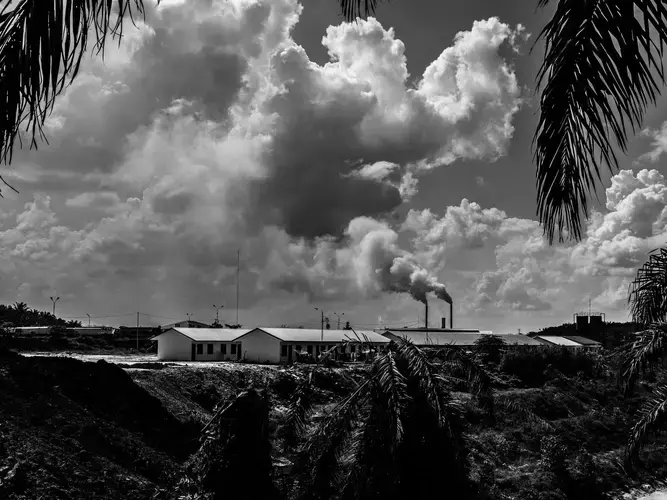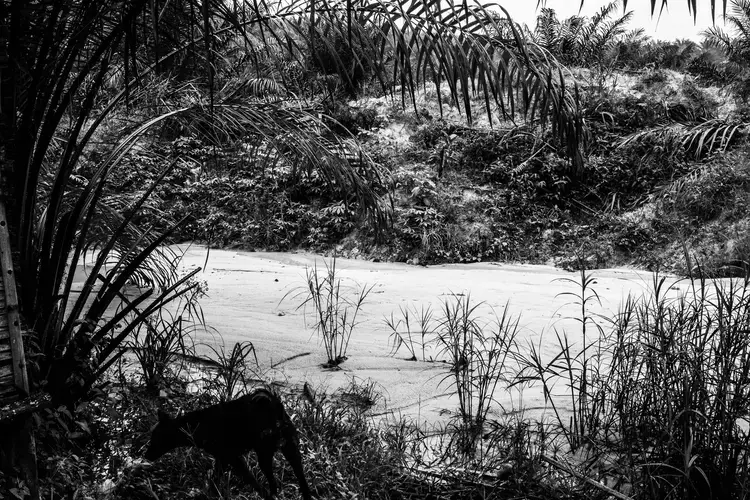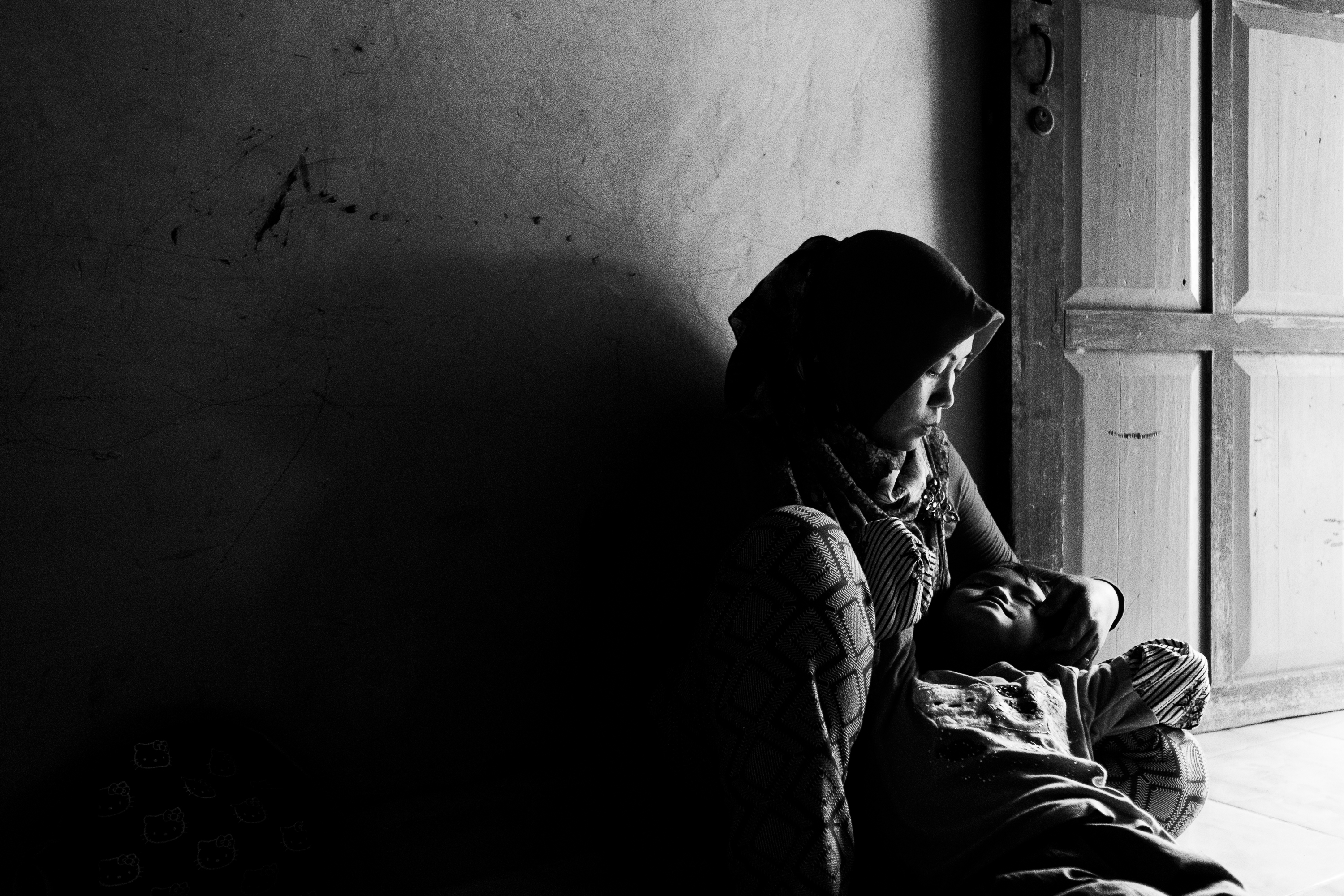
Indonesia is the world’s biggest producer and exporter of palm oil. Although you may have never purchased a bottle of it yourself, it’s an ingredient that you probably use or consume almost every day—in detergent, cosmetics, instant noodles, baked goods, and more. Extracted from the fruit of the oil palm tree, palm oil is a multibillion-dollar industry for Indonesia. But the people responsible for its production are not the ones reaping the riches.
The first oil palms were planted in Indonesia by Dutch colonists in the mid-19th century, but the industry really started to boom in the late 1960s, when the World Bank invested in the crop. Now the palm-oil industry is the top cause of deforestation in the country. This past June I visited Kandis, a subdistrict of the Indonesian province of Riau that is also the ancestral home of the Sakai, an indigenous group who once lived a nomadic hunter-gatherer lifestyle. About 50 years ago, the state appropriated massive swaths of indigenous land across the country and gave it away to large companies, which then began logging in earnest. By the 1980s, the area’s logging possibilities had been exhausted and companies started to plant oil palms. The once-lush forests of Kandis have given way to acres of palm trees. The Sakai villagers became contractual workers on the palm plantations, with the people I talked to earning only about $170 per month. Now, the air is filled with fumes from the mills; the river that was once clear and flowing is murky and streaked with mud.
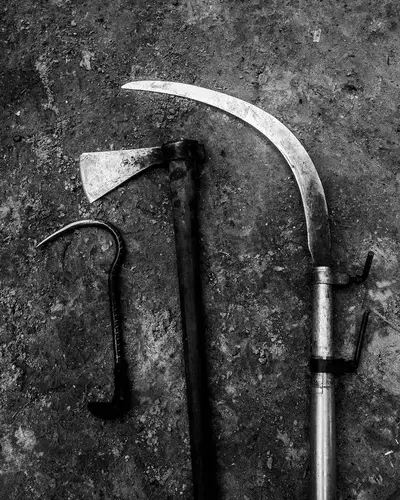
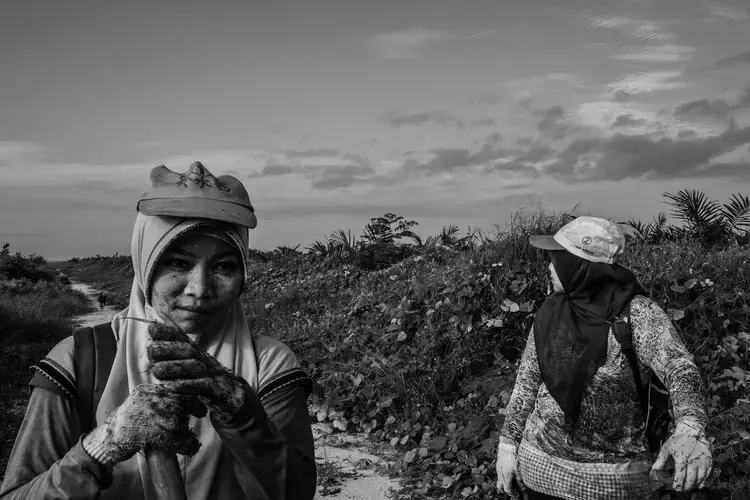
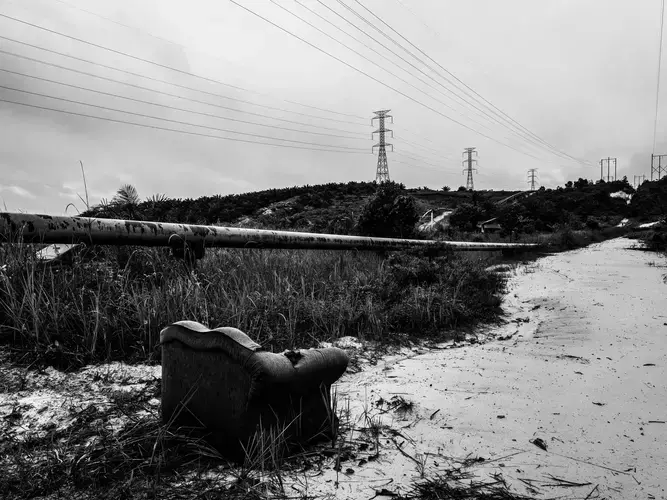
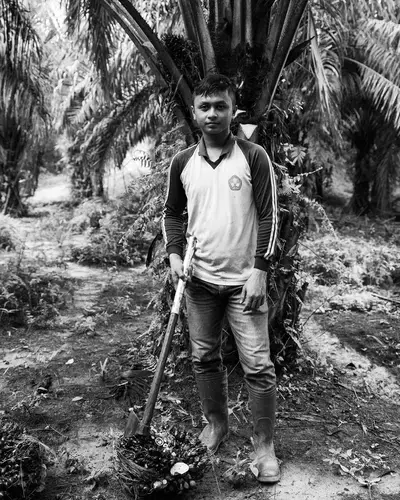
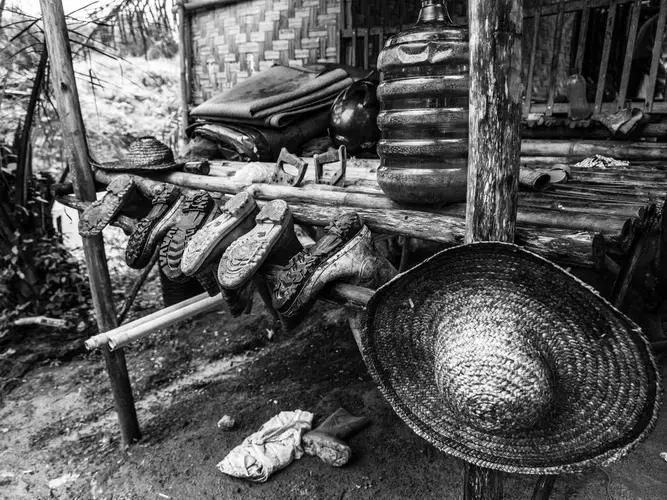
Working on a plantation is often a family affair. Each family is assigned about 12 to 17 acres to farm, overseen by a manager from the palm-oil company. When a married couple works together, the wife will take care of the saplings while the husband harvests the heavy palm fruit, which grow in bunches weighing as much as 100 lb. A heavy scythe is used to pick the fruit, leading to frequent accidents. Workers risk being hit on the head by falling fruit, or even severing their limbs with their sharp tools. And the relationship between companies and workers is fraught: one woman I met while I was photographing in Kandis told me that her husband ended up being sent to jail after an argument with one of the assistant managers on the plantation where he worked.
Another former plantation worker, Misnan, told me he worked with the palms part-time until he got into a motorbike accident on his way to work. The scythe he was carrying on his shoulder as he rode severed his arm completely. The arm was never reattached, and he was still recovering when I met him five months later. In addition, his youngest child, a one-year-old girl, had recently died of respiratory disease. This could have been related to the heavy pollution locals have to live with: there are seven palm-oil mills in Riau, and they expel smog 24 hours a day. Misnan told me that, after his accident, he had to go back to selling toys in his village to earn a living, making only about $4.75 a week.
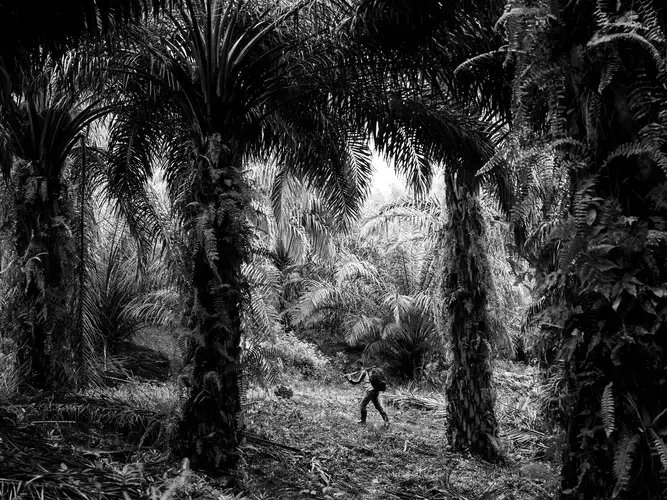
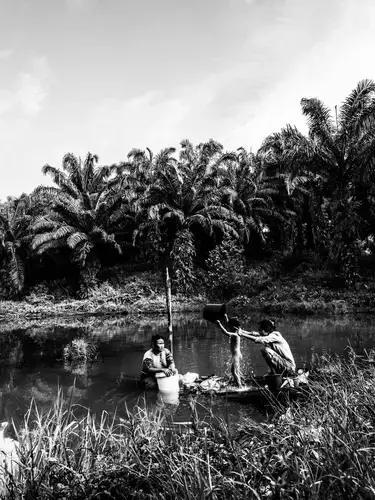
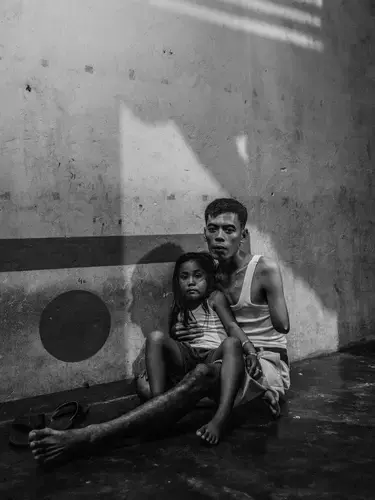
Indonesia’s rapid deforestation and pollution from the palm-oil industry have had a major effect on the environment. In 2009, the country pledged that it would reduce its greenhouse emissions by 26 percent by the year 2020, but more recent reports predict that number will be impossible to achieve. According to villagers in Riau, the chemicals from the mills are dumped in what remains of a river, where the water is so polluted that children who come in contact with it suffer from ringworm and other diseases.
Ida, who lives with her two children and husband, says that they use the water daily for everything except drinking. According to her, the children are now used to the dirty water and the resulting skin diseases—they have to be, since the only time they can afford to be seen by a doctor is when a local non-profit helps them to get a rare check-up. Every day she and her neighbors walk up and down a hill to get water from the only reservoir in the village, which turns muddy when it rains and dries up during the summer. The family buys a gallon of drinking water per week that costs about $3.77, which could mean that nearly 10 percent of their income goes to drinking water alone. She hopes her children will have access to clean water in the future.
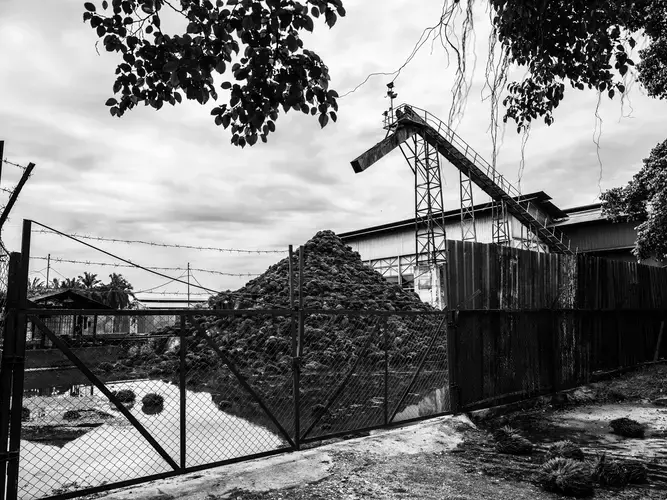
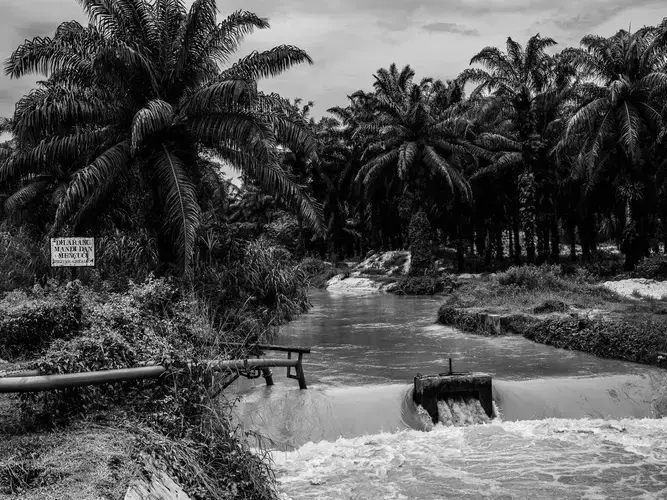

Another worker, Asnia, starts every day at 4 a.m. to prepare food for herself and her husband, Sunil. At 5:30 a.m., armed with their tools, they meet Asnia’s sister and head to the plantation together. Asnia takes care of the palm trees while Sunil harvests the fruit. Sunil’s family owns about 22 acres of oil palms, but because of the cost of farming and limited access to equipment, he is only able to farm about 2.5 acres of that. The family then sells the harvest to the larger companies in the area, such as PT Ivo Mas Tunggal, which have a monopoly in palm-oil production. Sunil works on different plots of land seven days a week.
Asnia and Sunil met and fell in love on a plantation, and they have each been working in the industry for more than 20 years. Asnia cannot read or write; both have accepted that their lives are on the plantation. They feel that they don’t have the option of leaving because of the limits of their education.
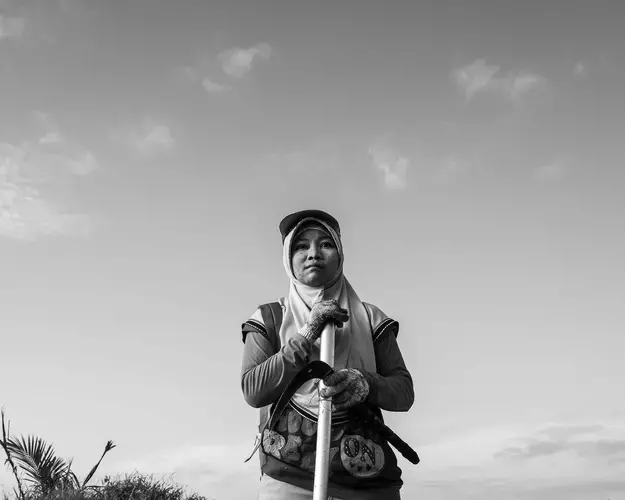

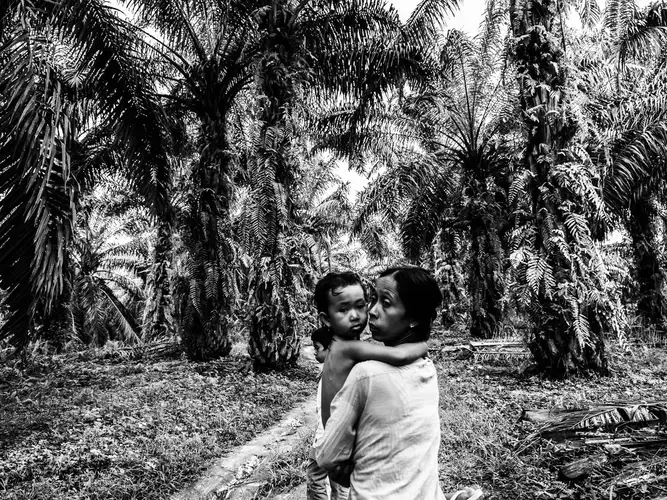
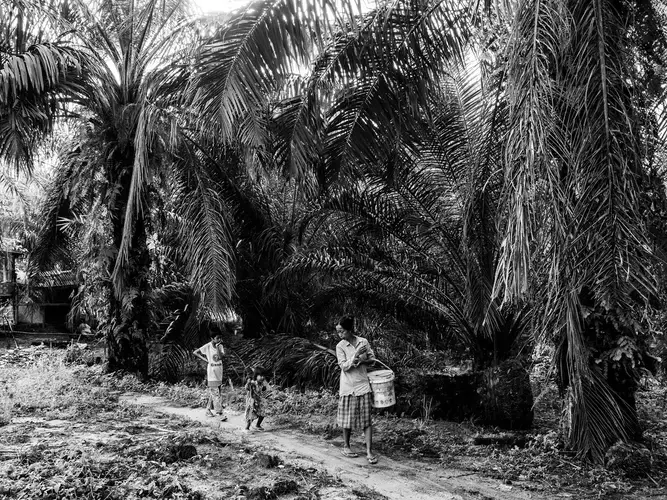
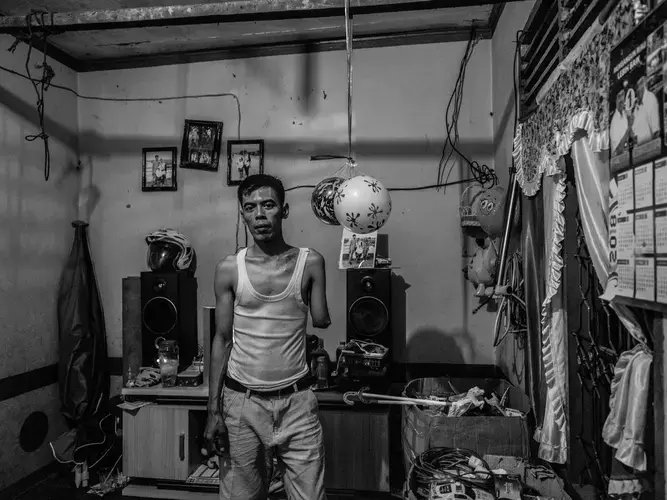
Indonesia has made some steps to reduce palm oil’s impact on the environment. The country’s government has instituted new standards under the moniker Indonesian Sustainable Palm Oil, which are meant to include both climate and human-rights protections. Yet the locals who bear the brunt of plantation work say they have not yet felt the impact of those changes. The workers in Kandis told me that their only hope was that their children would eventually leave the plantations in search of a better life.
